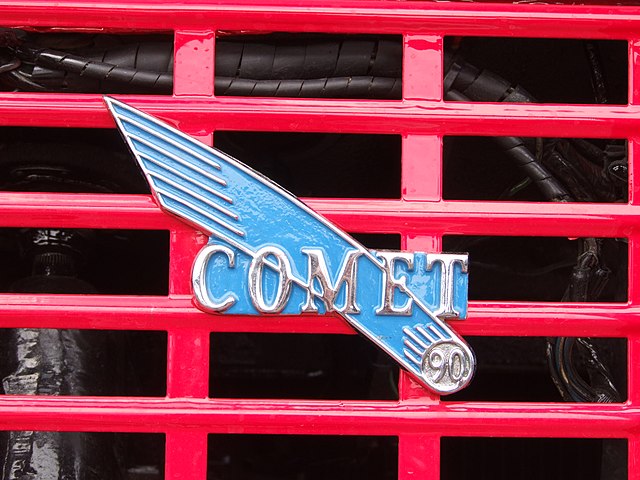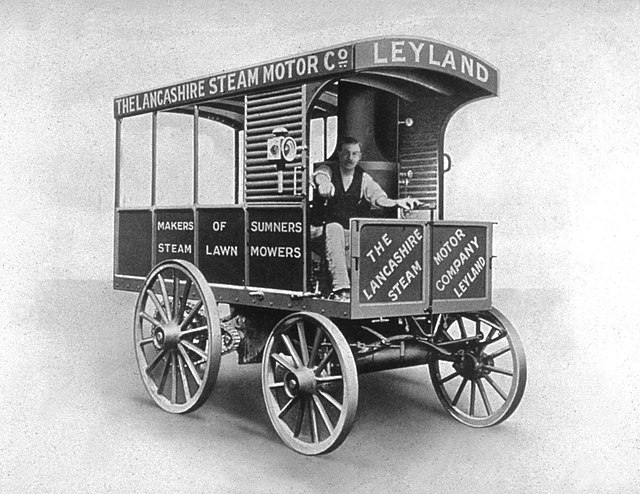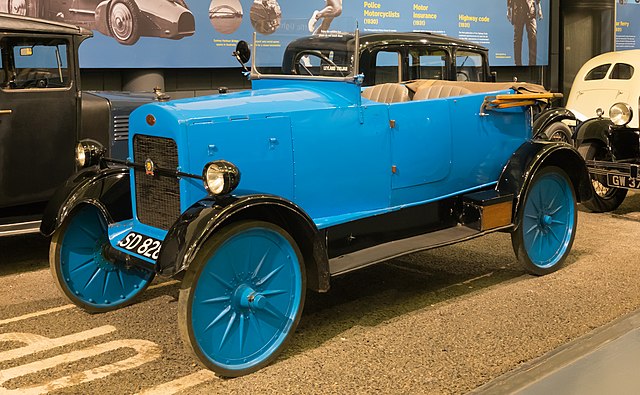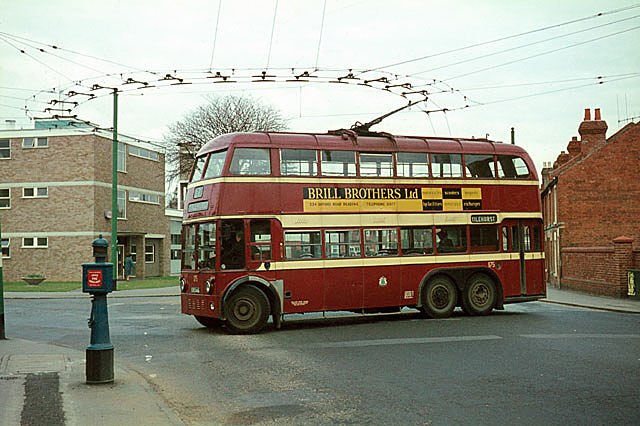Leyland Motors Limited was an English vehicle manufacturer of lorries, buses and trolleybuses. The company diversified into car manufacturing with its acquisitions of Triumph and Rover in 1960 and 1967, respectively. It gave its name to the British Leyland Motor Corporation, formed when it merged with British Motor Holdings in 1968, to become British Leyland after being nationalised. British Leyland later changed its name to simply BL, then in 1986 to Rover Group.
Builder's plate
Badge on a 1954 Leyland Comet 90 flatbed lorry
The original Leyland steam van
A 1924 Leyland Trojan tourer
A trolleybus is an electric bus that draws power from dual overhead wires using spring-loaded trolley poles. Two wires, and two trolley poles, are required to complete the electrical circuit. This differs from a tram or streetcar, which normally uses the track as the return path, needing only one wire and one pole. They are also distinct from other kinds of electric buses, which usually rely on batteries. Power is most commonly supplied as 600-volt direct current, but there are exceptions.
Busscar trolleybus in São Paulo, Brazil
Solaris trolleybus in Landskrona, Sweden
The "Elektromote", the world's first trolleybus, in Berlin, Germany, 1882
A double-deck trolleybus in Reading, England, 1966








